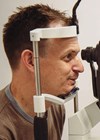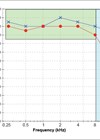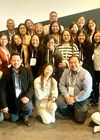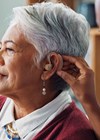Audiology features
Ida Institute’s legacy and the future of person-centred care
Professor Kris English reflects on the IDA Institute’s closure, celebrating its legacy of advancing patient-centred care and reshaping audiological counselling worldwide. In September 2008, the Ida Institute’s Director, Lise Lotte Bundesen, and her team held its inaugural ‘Defining Hearing Seminar’...
How to identify and support adults with auditory processing disorder: a focus on low-gain devices and auditory training
Some adults struggle with hearing in noise despite normal audiograms. Tools like the HHIA, low-gain devices and auditory training can help identify and support these cases. In this article, Angela Alexander and Fatima Abbas use a case study to discuss...
Tish Gaffney – AAA President
From a sunny Southend, UK, Gareth Smith takes 10 minutes to dial into the Sunshine State, USA, and catch up with Tish Gaffney for a lightning-speed chat on the movements and motivations of the 35th president of the American Academy...
The ups and downs of overseas research – the inner ear at altitude
Conducting research at extreme altitude presents unique challenges. This study of the inner ear at 5350m navigates setbacks in a quest for scientific discovery. Having completed a diploma in mountain medicine in my foundation years, I decided to undertake a...
Empathic consulting: elevating audiology through connection
A new course in empathic consulting helps audiologists deepen patient trust and engagement, focusing on emotional insight to improve care quality and consultation outcomes. Leightons and The Hearing Care Partnership have developed an innovative course focused on empathic consulting for...
Audiology and ophthalmology: a comparative perspective on diagnostics and patient care
What are the similarities and differences between audiology and ophthalmic practices, and what can we learn from each other? Rosalyn Painter finds out. I’m here with Chris Gordon and Anthony Vukic from Gloucestershire Hospitals NHS Foundation Trust to find out...
Why hearing above 8 kHz matters more than you think
This review explores the significance of extended high-frequency hearing loss (above 8 kHz) and why it may be worth doing clinically more frequently. There are many conditions that may hide underneath a normal audiogram, and one of the easiest to...
Silent crisis: the exodus of hearing healthcare professionals from the Philippines
The migration of Filipino audiologists and otolaryngologists abroad is worsening the shortage of hearing specialists. Improving local conditions is vital to retaining talent. As ear and hearing healthcare professionals practising in the Philippines, we have seen the struggle in keeping...
Beyond hearing aids: early interventions in hearing care to lower dementia risk
Published in print under the titleHearing care and dementia: professional insights on the new Lancet Commission findingsThe Lancet Commission on ‘Dementia prevention, intervention and care: 2024 report’ highlights a list of potential modifiable factors to reduce dementia risk. As with...
Aligning hearing and cognitive healthcare in older people
Published in print under the titleHearing care and dementia: professional insights on the new Lancet Commission findingsThe Lancet Commission on ‘Dementia prevention, intervention and care: 2024 report’ highlights a list of potential modifiable factors to reduce dementia risk. As with...
Commentary: dementia, hearing loss, and the danger of professional rabbit holes
The Lancet, a world-leading general medical journal, has a global impact. Its commissioned report into dementia prevention, intervention and care has been cited over 6000 times and has further been reviewed and updated in 2020 and now 2024. Here, Profs...
The changing landscape for hearing loss therapeutics: novel advances of gene and cell therapies
Recent years have seen advances in hearing loss therapeutics, with novel treatments trialled in humans, and others nearing promising first-in-kind clinical trials. First successful clinical trials for a specific form of genetic hearing loss Very exciting news has emerged in...

















